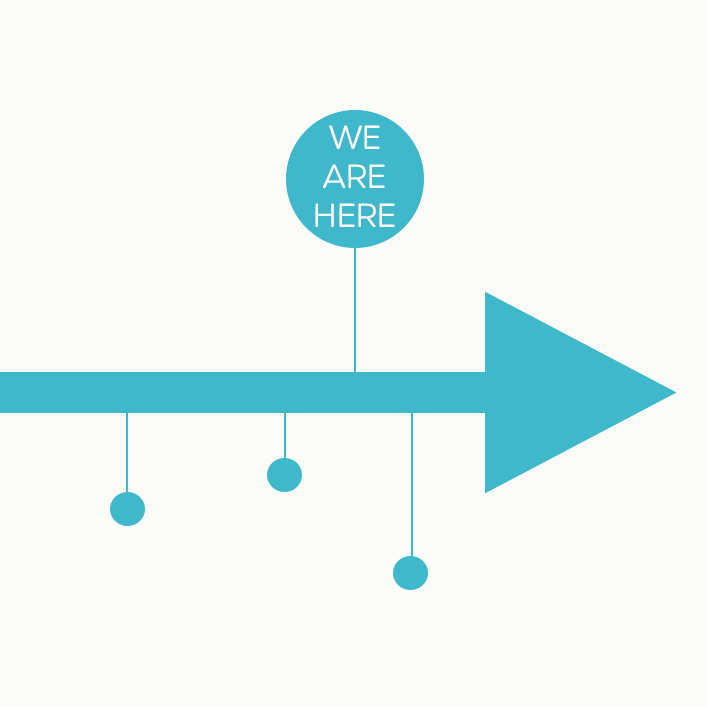Coronavirus news has completely dominated the media over the last year and a half. The constant influx of news has been overbearing, to say the least. Lately, it feels like it is nearly impossible to keep up with anything besides the big picture. We look to our trusted sources of information to help weed out the unnecessary or false information so that we can stay as updated as possible.
Due to the nature of our work, Radius has been lucky enough to be able to view the pandemic from a unique viewpoint. Being in constant contact with both healthcare workers and healthcare facilities, we got to see the world of healthcare before and during COVID, and have some ideas for what we might see after. Take a look below and get an idea of what we have seen from our side of the process since early 2020.
Before COVID
Let us look at where we stood before COVID. It’s easier to idealize the situation now that we are, essentially, in crisis, but we were not in a great spot before coronavirus struck. Hospitals were growing to fit a population that lived longer and needed more care, but the necessary push for schooling new healthcare talent was absent.
With the growth of the industry outpacing the creation of providers and qualified staff, it would be an understatement to say that we were underprepared for a deadly pandemic to hit. Years of underinvestment in public health infrastructure certainly did nothing to help. For years, healthcare professionals have been spread thin, overworked, and underpaid, and, little did we know, it was only about to get worse.
During COVID
Coronavirus hit the United States with a bang that no one was truly prepared for. The first declared cases came to the US in February 2020 and the healthcare community has been flying by the seat of their pants since then.
From a recruiting standpoint, we were able to see what was happening behind the curtain. While we were playing commercials thanking our doctors and nurses, hospitals were firing, furloughing, and defunding many other aspects of hospital life that did not have to do directly with COVID. For every staff member set to the side, a travel nurse or doctor was brought in to assist with the massive influx of COVID and ICU cases.
Unfortunately, that was not the quick or perfect fix that everyone had been hoping for. The numbers sored with time and the temporary and travel healthcare professionals that had been called in were either suffering from burnout or were following the money to places that were offering exorbitant crisis pay.
With more people getting treatment and surviving, there were more healthcare issues that needed to be addressed beyond ICU care. After having thinned out their non-emergency staff, many facilities found themselves in a panic to rehire their previous workers, now that they needed them.
Respiratory therapists, biomedical electronics technicians, and other professionals were suddenly in need, but those professionals had not been waiting around. They had gone and found new jobs or new career paths and were not particularly keen, in many cases, to return to the place that had dropped them without a second thought. Feeling undervalued and with proof that they were massively underpaid, these professionals were not rushing to accept just any job anymore.
So we are facing staff and provider shortages with increased patient demand across the United States. Beds are filling in ICUs, caretakers are feeling completely burnt out from overworking in stressful, deadly, and depressing conditions, and the vaccines that brought hope were turned into a political playground that slowed down the distribution, leaving the US open to the Delta variant.
We can recap the last twenty months as much as we would like, but the fact is that the ‘during’ aspect of this pandemic is still happening. We’re not out of the woods yet and, while there is hope for health and safety returning, we are certainly not at the end of it all. Vaccine avoidance, staff and provider shortages, and loosening regulations will keep us from progressing forward.
After COVID
Eventually, the question has to be asked: is there an ‘after COVID’? Will we be stuck with constant variations, getting yearly vaccines like we do with the flu? Will COVID ever be completely eradicated? And if it is, do we go back to how we were or risk a changing, possibly for the better? With these questions and more in mind, the future can seem intimidating and overwhelming, but, ultimately, the past has already answered some of these questions for us.
As we discussed, even before COVID, there was a healthcare staff and provider shortage. Going back to the status quo puts us at risk of fulfilling previous predications that did not account for COVID. It was clear that something needed to change and, while coronavirus was not the catalyst we were hoping for, it might be the one that forces us in the right direction.
The hope is that this ordeal will put into perspective the need for qualified, well-paid, and valued healthcare workers at all levels of care. As staffers, Radius is hoping to see more jobs that emphasize work-life balance, competitive pay, and genuinely good healthcare plans to provide mental, financial, and physical safety to the healthcare workers we look to hire.
If you decide not to work with a recruiter, as a healthcare worker, you can still help change the healthcare market by encouraging companies to offer fair job opportunities. If you are unsure how to do this on you own, then feel free to reach out to us and we will be happy to help! You can apply directly to one of our job board postings or send us in your resume and we’ll help fit you to the perfect position!
No matter how you plan to do it, we know that moving forward is going to be a group effort. If we want to keep the changes that we have seen implemented, or add new ones, we need to speak up and be heard. Let us know below what kind of changes you are looking for in future opportunities so we can help bring them to life!











